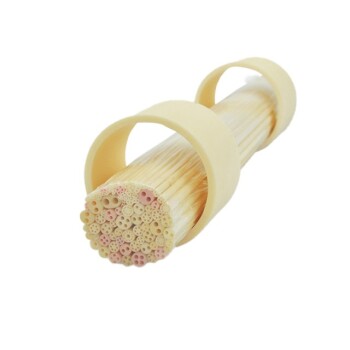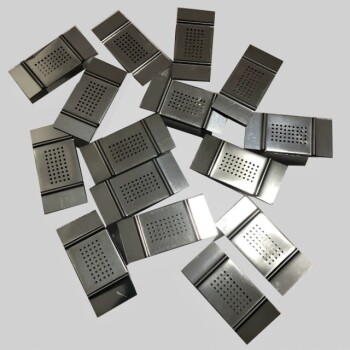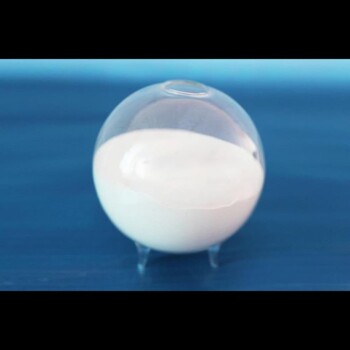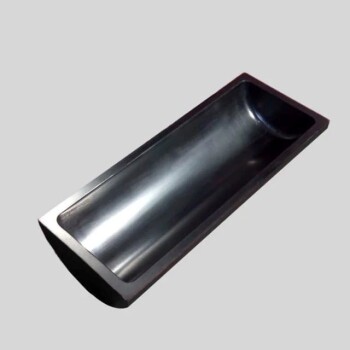The recommended heating rate for an alumina tube is not a single value but a carefully managed schedule that changes with temperature. While a general rule of thumb is 5°C per minute, the optimal rate must decrease significantly at higher temperatures to prevent catastrophic failure from thermal shock. Adhering to a variable-rate schedule is essential for protecting the tube's structural integrity.
Your core objective is not simply to heat the tube, but to manage its internal temperature gradient. Alumina is strong but brittle; rapid heating or cooling creates immense internal stress between the hotter surface and cooler core, which is the primary cause of fractures.
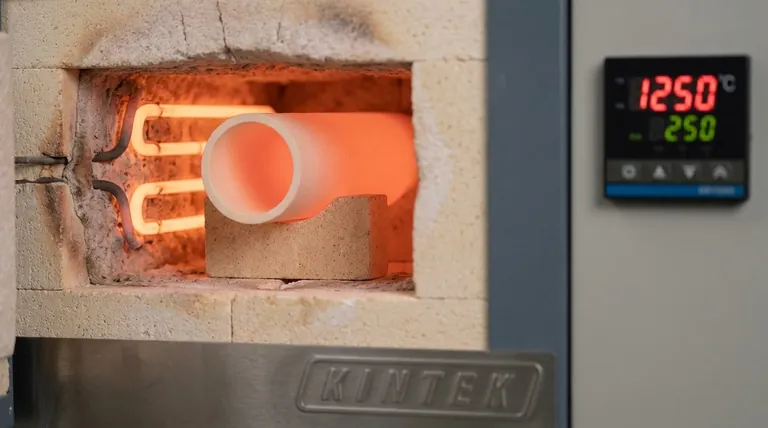
Why a Controlled Heating Rate is Critical
Understanding the material science behind your equipment is the first step toward using it effectively and safely. The need for a slow, controlled heating rate is directly tied to the physical properties of alumina ceramics.
Understanding Thermal Shock
Alumina tubes exhibit excellent resistance to high temperatures, but they are susceptible to thermal shock. This occurs when one part of the ceramic heats or cools much faster than another.
This temperature difference creates internal mechanical stress. If that stress exceeds the material's inherent strength, a crack will form, often causing a complete fracture of the tube.
The Role of Material Properties
Alumina's desirable properties, such as low thermal expansion and high thermal conductivity, make it "thermal shock resistant" compared to other ceramics. However, this resistance has its limits.
Even with good thermal conductivity, heat takes time to travel from the outer surface to the inner core of the tube wall. Slow ramp rates give the temperature time to equalize throughout the material, minimizing the internal stress.
Pre-Treating New Tubes
For new alumina tubes, it is a critical best practice to perform an initial bake-out before its first use in a process.
Heating a new tube to 1300°C at a rate of 5°C/min and holding it there briefly helps eliminate residual stress and contaminants from the manufacturing process. This significantly improves its longevity and reliability.
A Practical Heating Schedule
For maximum safety and tube lifespan, you should adopt a variable heating rate. As the temperature increases, the ramp rate must decrease.
Below 500°C: ≤5°C/min
This initial phase requires a gentle start to slowly bring the entire tube up from ambient temperature without introducing stress.
500°C to 800°C: ≤10°C/min
In this mid-temperature range, you can safely accelerate the heating rate. The material is less susceptible to thermal gradients in this window.
800°C to 1000°C: ≤5°C/min
As you approach higher temperatures, it is crucial to slow the ramp rate back down to prepare the material for more extreme conditions.
1000°C to 1400°C: ≤3°C/min
Above 1000°C, the risk of thermal shock increases. A slow ramp rate of 3°C per minute or less is essential.
Above 1400°C: ≤2°C/min
At these extreme operational temperatures, the alumina is most vulnerable. A very slow rate of 1-2°C per minute is required to prevent fracture as you approach your target temperature.
Understanding the Trade-offs and Key Considerations
Following the heating schedule is the most important step, but other factors also influence the performance and lifespan of your alumina tube.
Speed vs. Tube Longevity
The trade-off is simple: faster heating cycles save process time but dramatically increase the risk of fracture and reduce the overall lifespan of the tube. A slower, more patient approach is always the safest and most economical choice in the long run.
The Importance of Cooling
Fractures are just as likely to occur during cooling as they are during heating. Rapid cooling is extremely dangerous for the tube. Your cooling program should mirror your heating program, with slow, controlled ramp-downs.
Unsupported vs. Supported Tubes
Even though high-purity alumina has a maximum use temperature near 1800°C, it can begin to soften and sag. For an unsupported horizontal tube, this can occur at temperatures as low as 1600°C. Ensure long tubes are properly supported in the furnace hot zone.
Applying This to Your Process
Your specific protocol should be based on your primary goal, whether it is maximizing safety, speed, or preparing new equipment.
- If your primary focus is maximum tube lifespan and safety: Always use the slowest practical heating rate, never exceeding the recommended schedule, and ensure your cooling rates are equally conservative.
- If you are using a new tube for the first time: Always perform an initial stress-relief bake to 1300°C at a rate of 5°C/min before its first operational use.
- If you need to balance process time and safety: You may use the faster 10°C/min rate in the 500-800°C range, but you must strictly adhere to the slower rates at the beginning and at all temperatures above 1000°C.
By managing thermal gradients meticulously, you protect your investment and ensure reliable, repeatable results from your high-temperature processes.
Summary Table:
| Temperature Range (°C) | Recommended Heating Rate (°C/min) | Rationale |
|---|---|---|
| Below 500°C | ≤5°C/min | Gentle start to minimize initial thermal stress |
| 500°C to 800°C | ≤10°C/min | Safe acceleration in mid-temperature range |
| 800°C to 1000°C | ≤5°C/min | Slowing down as temperature increases |
| 1000°C to 1400°C | ≤3°C/min | High risk of thermal shock; slow rate is essential |
| Above 1400°C | ≤2°C/min | Extreme vulnerability; very slow rate required |
Protect your investment and ensure reliable high-temperature processes with KINTEK's expertise. Proper heating and cooling protocols are critical for the longevity of your alumina tubes and the safety of your lab. KINTEK specializes in high-quality lab equipment and consumables, including alumina tubes designed for demanding applications. Our team can help you select the right components and develop optimal thermal schedules for your specific needs. Contact us today to discuss how we can support your laboratory's success and prevent costly equipment failures.
Visual Guide
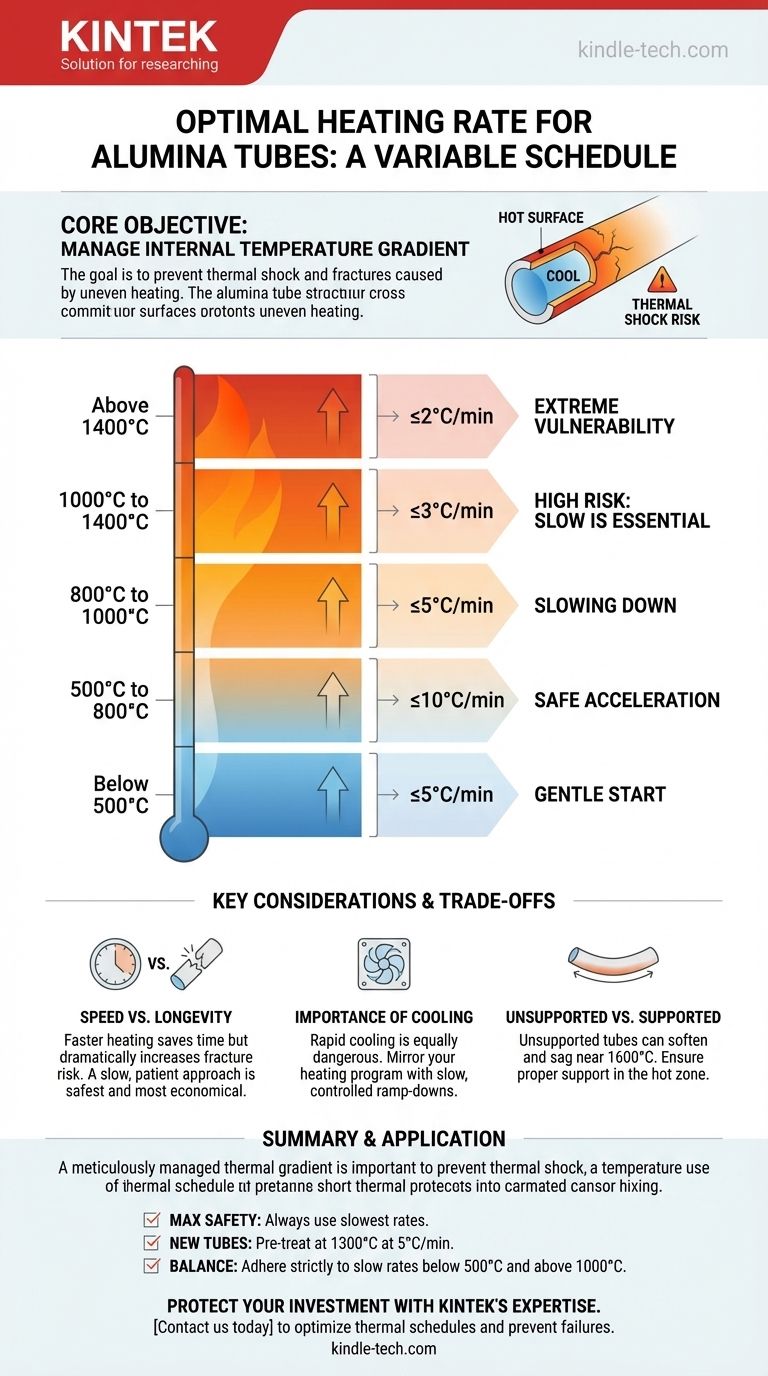
Related Products
- High Temperature Alumina (Al2O3) Furnace Tube for Engineering Advanced Fine Ceramics
- High Temperature Aluminum Oxide (Al2O3) Protective Tube for Engineering Advanced Fine Ceramics
- 1700℃ Laboratory High Temperature Tube Furnace with Alumina Tube
- 1400℃ Laboratory High Temperature Tube Furnace with Alumina Tube
- High Pressure Laboratory Vacuum Tube Furnace Quartz Tubular Furnace
People Also Ask
- What is the temperature range of alumina tube? A Guide to Maximizing Performance and Lifespan
- What is ceramic tube made of? Choosing the Right Material for Your Application
- What material are furnace tubes? Choosing the Right Material for High-Temperature Success
- What is the maximum temperature for alumina tube? Unlock Its Full Potential with High Purity
- What material is used for furnace tubes? Select the Right Tube for High-Temp Processes

